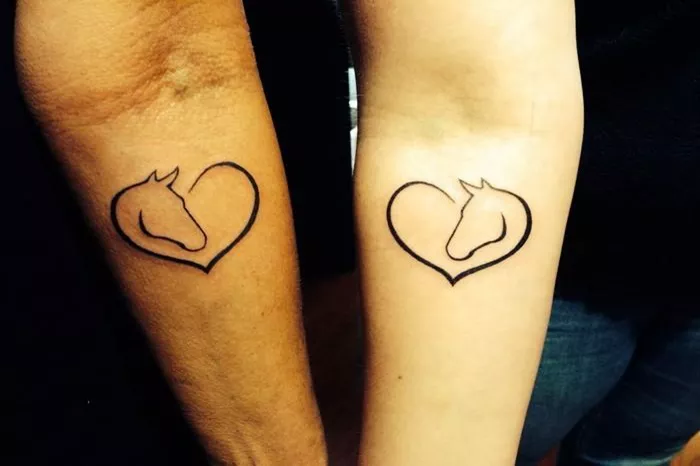In the realm of body art, tattoos serve as a profound form of self-expression, often encapsulating deeply personal narratives and emotions. Among the myriad of themes and motifs that individuals choose to permanently etch onto their skin, representations of depression hold a significant, albeit somber, place. For those grappling with this complex mental health condition, tattoos can serve as both a means of catharsis and a tangible reminder of their struggles. In this comprehensive exploration, we delve into the symbolism behind tattoos that represent depression, examining the various elements, imagery, and motifs that individuals incorporate into their ink to articulate their experiences with this pervasive disorder.
Understanding Depression
Before delving into the symbolism of tattoos representing depression, it is crucial to grasp a foundational understanding of the condition itself. Depression, often colloquially referred to as the “common cold” of mental health, encompasses a spectrum of symptoms that can significantly impact an individual’s emotional, cognitive, and physical well-being. Characterized by persistent feelings of sadness, hopelessness, and disinterest in once-enjoyable activities, depression can manifest in diverse ways, ranging from mild to severe.
Moreover, depression is a highly nuanced and multifaceted phenomenon, influenced by a myriad of factors including genetic predisposition, environmental stressors, and neurochemical imbalances within the brain. While the experience of depression is deeply subjective and varies from person to person, it is often marked by a profound sense of isolation and alienation, as individuals grapple with internalized struggles that may remain invisible to the outside world.
Tattoos as Therapeutic Expression
In recent years, tattoos have emerged as a powerful medium for individuals to externalize and process their innermost thoughts, emotions, and experiences. Far from mere aesthetic adornments, tattoos serve as living canvases through which individuals can articulate their personal narratives, confront their demons, and reclaim agency over their bodies. For many individuals contending with depression, tattoos offer a therapeutic outlet through which they can visually encapsulate the complex interplay of emotions that characterize their lived experiences.
Indeed, the act of getting a tattoo can itself be a deeply cathartic process, providing individuals with a tangible sense of control and ownership over their bodies amidst the chaos of mental illness. In this regard, tattoos representing depression serve as both a form of self-expression and a testament to resilience, allowing individuals to transform their pain into art and assert their agency in the face of adversity.
Symbolism in Tattoo Design: Depicting Depression
When it comes to tattoos representing depression, the symbolism embedded within the design is of paramount importance. Every element, from imagery to color palette, serves as a conduit through which individuals can articulate the nuances of their emotional landscape. While the symbolic representations of depression are as diverse as the individuals who bear them, certain motifs frequently emerge within this thematic realm.
Darkness and Desolation
Central to many tattoos representing depression is the motif of darkness and desolation. Symbolized through imagery such as barren landscapes, storm clouds, or shadowy figures, this motif evokes the profound sense of emptiness and despair that often accompanies the experience of depression. For some individuals, incorporating elements of darkness into their tattoo design serves as a visual metaphor for the overwhelming nature of their internal struggles, as they navigate through the murky depths of their own minds.
Chains and Shackles
Another common motif found in tattoos representing depression is that of chains and shackles. Symbolic of the entrapment and bondage that individuals may feel as they grapple with the weight of their mental illness, these elements serve as a poignant reminder of the barriers that can inhibit one’s ability to experience freedom and joy. Whether depicted as literal chains wrapping around the body or as abstract imagery evoking a sense of confinement, this motif speaks to the pervasive sense of limitation and restriction that often accompanies depression.
Brokenness and Fragmentation
The motif of brokenness and fragmentation is also prevalent in tattoos representing depression, reflecting the shattered sense of self that individuals may experience as they confront the internal turmoil of their condition. Symbolized through imagery such as fractured mirrors, shattered glass, or fragmented figures, this motif encapsulates the profound sense of disintegration and disconnection that often characterizes the experience of depression. By visually externalizing their internal fragmentation, individuals can confront their fractured sense of self and begin the process of healing and integration.
Hope and Resilience
Despite the pervasive darkness that often permeates tattoos representing depression, elements of hope and resilience can also be found within these designs. Whether depicted through imagery such as blooming flowers emerging from barren soil, birds in flight, or symbols of light piercing through darkness, these elements serve as beacons of optimism amidst the storm of despair. For many individuals, incorporating symbols of hope and resilience into their tattoo design serves as a reminder of their inner strength and resilience in the face of adversity, inspiring them to persevere on their journey towards healing and wholeness.
Conclusion
In the realm of tattoo artistry, the representation of depression holds a unique and poignant significance. Through the medium of ink and skin, individuals can externalize their innermost thoughts and emotions, transforming their pain into art and reclaiming agency over their lived experiences. From symbols of darkness and despair to motifs of hope and resilience, tattoos representing depression serve as visual narratives of the human condition, speaking to the complexities of mental illness with both poignancy and profundity. As individuals navigate the labyrinth of their own minds, these tattoos stand as enduring testaments to the power of visual expression in the quest for healing, understanding, and self-empowerment.

